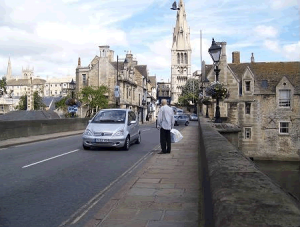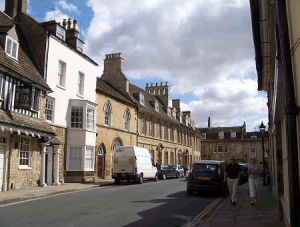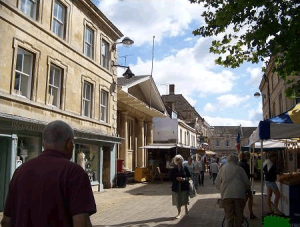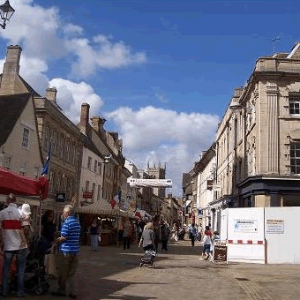Stamford
The colour of the local stone is due to Stamford’s geological position, on the limestone ridge extending from Bath in the West Country to Stamford in Lincolnshire.
It flourished in the Middle Ages on the wool trade, and in the 18th century it was a major stage on the Great North Road from London to York and Edinburgh, with an active coaching trade. It was also the usual residence of local attorneys, an influential category because they looked after the interests of local landowners.
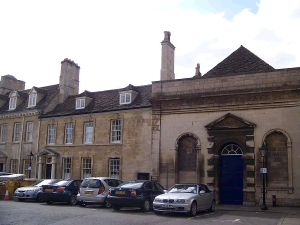
- The Assembly Rooms
- [click on the picture to enlarge it]
Stamford has retained its Georgian appearance because the local landlords of the neighbouring country house, Burghley House, acted in the 19th century to prevent industrialisation, fearing it might change the social structure and increase the power of industrialists at the expense of their own influence. The railway line was designed through Peterborough, ten miles to the East; Stamford declined and the population diminished. It is now a preserved historic market town serving as a setting for films.
The Assembly Rooms (1727) are typical of such Georgian fashionable places; they are the earliest example in England. Films derived from novels, such as Jane Austen’s, have been shot in their rooms.

